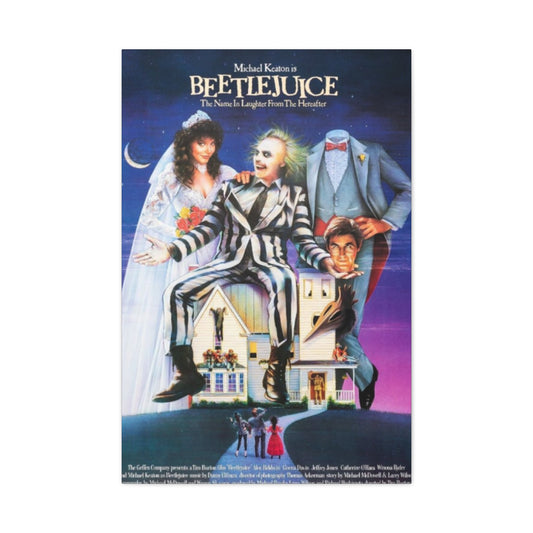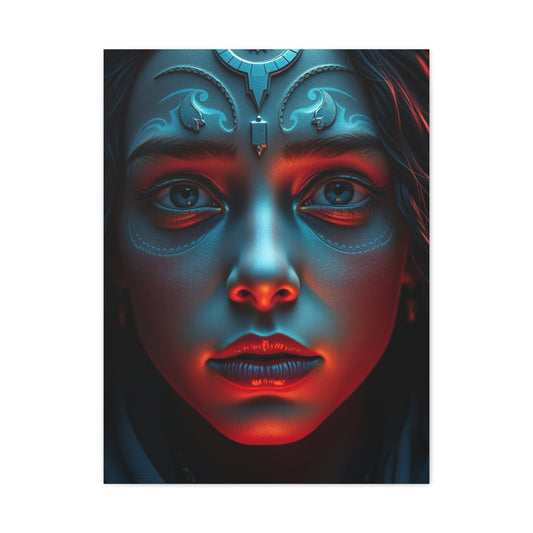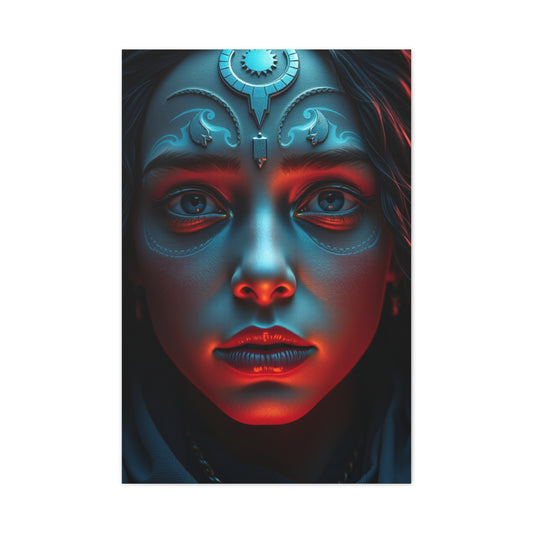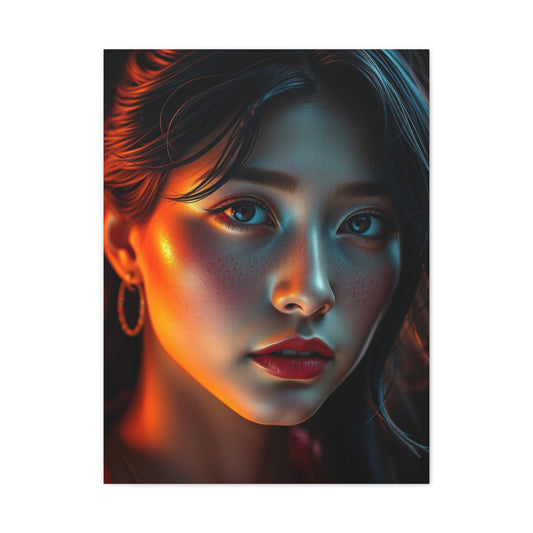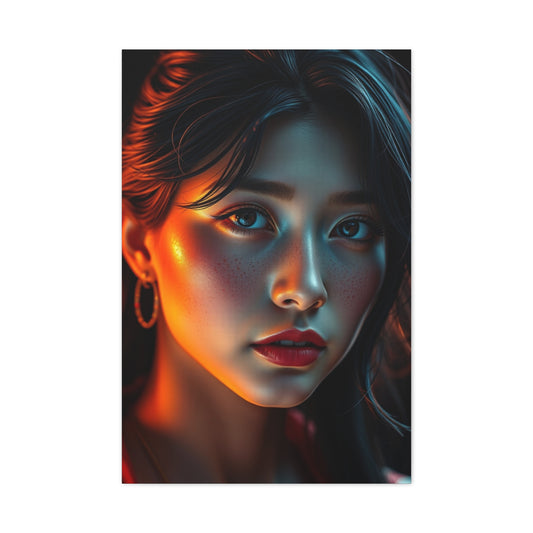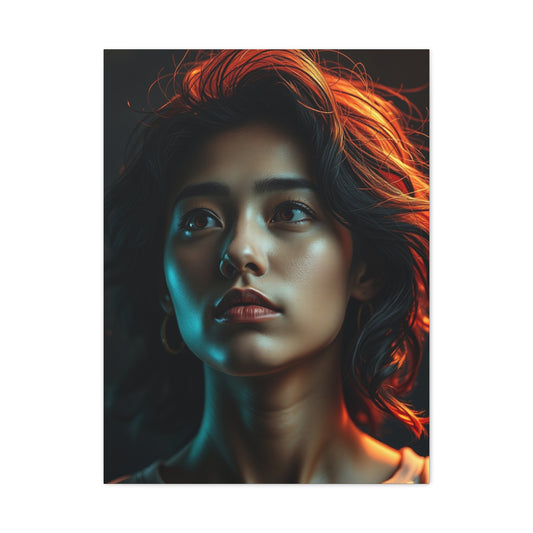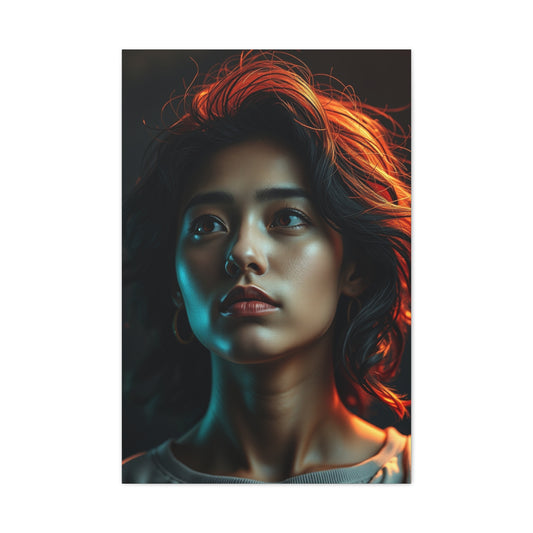The Sensory Seduction of Cold Wax Painting
Cold wax medium holds a distinctive and increasingly celebrated place in the world of contemporary oil painting. For artists drawn to texture, physicality, and depth, cold wax offers an experience that goes far beyond traditional brushwork. Unlike the smooth, controlled application of oils alone, cold wax introduces a tactile and sculptural element to painting that invites pushing, scraping, layering, and inscribing directly into the surface. It transforms the act of painting into something deeply physical, bordering on the sculptural, and allows an artist’s hand to leave tangible traces behind.
For those familiar with encaustic painting, which employs hot wax to create luminous, layered effects, cold wax provides a compelling alternative that requires no heat. It arrives in a buttery, creamy consistency ready to be mixed directly with oil paint or dry pigments, allowing the artist to work immediately without the need for fusing or specialized equipment. This immediacy makes it especially appealing for painters who thrive on intuition, spontaneity, and a visceral connection to their materials.
The cold wax medium, at its core, is a blend of beeswax and other ingredients such as natural resins, alkyds, or solvents like turpentine or odorless mineral spirits. Each brand fine-tunes its formulation to meet particular qualities, whether it's density, drying time, or workability. As a result, no two cold wax mediums feel the same. Some have a matte finish and thick body ideal for building texture, while others are more fluid and lustrous, leaning into a glossy, smooth finish. These variations make cold wax a dynamic and highly personal medium, one that artists must explore with curiosity to find the blend that resonates most with their technique and aesthetic.
Over the years, as more painters incorporate cold wax into their practice, new formulations have emerged on the market, each with subtle or striking differences in texture, behavior, and finish. This diversity has fostered a growing dialogue around how the properties of a medium can either enhance or hinder an artist’s process. Within this conversation, painters like Zoë Taylor offer valuable insight, as they evaluate these materials not just for their chemical makeup but for how they feel in the hand, how they move under the knife, and how they shape the visual and emotional tone of a painting.
A Painter’s Journey Through Texture and Place
Zoë Taylor is an accomplished oil painter based in the rural landscape of Worcestershire, England. Her work is a poetic interpretation of the natural world, focusing especially on the stormy, rain-washed environments of the British Isles. But Taylor’s goal is not mere representation. Instead, she strives to capture the essence and mood of the land's atmosphere, its movement, and its emotional resonance. Her paintings are meditations on fleeting moments: the breath before a storm, the shimmer of wet leaves in low light, the way fog softens a distant hill. These elements are translated through expressive gestures, layered textures, and carefully modulated color fields.
In many of her pieces, texture is not just an aesthetic choice but a language in itself. The ridges and grooves left by a palette knife suggest geological forces and weathered surfaces. Her reliance on non-traditional toolsknives, scrapers, brayersreflects her desire to engage physically with the painting. The tools she selects are extensions of her vision, allowing her to push and pull the surface until it matches the internal image she carries.
This emphasis on texture makes her an ideal voice in conversations about cold wax mediums. For Taylor, the medium must do more than extend the drying time of oils or add body to the paint; it must also support her physical dialogue with the painting. It needs to resist and yield in specific ways. If it is too soft or slippery, it risks disrupting the gestural vocabulary she has spent years developing. This is where her review of Zest-it Cold Wax becomes particularly revealing.
As an artist already familiar with popular cold wax brands like Dorland’s and Gamblin, Taylor was intrigued by the arrival of Zest-it on the market. The product stood out immediately due to its appearance and consistency. While traditional waxes tend to be soft, velvety, and matte, Zest-it is more translucent and glossy. Its yellowish tint can be initially surprising, though it disappears entirely once mixed with paint. What lingers, however, is its slick, jelly-like texture. It moves like petroleum jelly or thick honeyviscous, stringy, and strangely glossy compared to the more opaque formulations of its peers.
Upon mixing Zest-it with oil paint, Taylor noticed an immediate difference in handling. The mixture became more pliant and luminous, creating a smoother, wetter blend. This is a departure from the dense, resistance-rich texture she typically favors. As she began working with it on Arches oil paper, she found that the paint glided more than it gripped, producing a finish that felt more fluid and less sculptural. When the piece dried, it retained a subtle sheen that contrasted sharply with the matte finishes she finds most evocative of earth, fog, and shadow.
While Taylor ultimately found the product incompatible with her approach, she was quick to point out that this did not make it a poor medium. Rather, it served a different artistic sensibilityperhaps someone who prioritizes brushwork, transparency, and the luminous interplay of layers over knife-carved impasto and dramatic surface articulation.
Diverse Mediums, Expanding Possibilities
The role of any painting medium is not to dictate, but to collaborate with the artist. As Zoë Taylor’s experience shows, the suitability of a material depends as much on the artist's method and intent as it does on the formulation itself. A product that feels unruly in one painter’s hands might unlock new avenues for another. In this way, the growing range of cold wax products doesn’t complicate the landscapeit enriches it.
Zest-it Cold Wax may not appeal to artists seeking density and tactility, but it has unique strengths. Its smoothness and high translucency lend themselves beautifully to techniques that rely on layered glazes or subtle tonal shifts. Artists who favor a more painterly, fluid applicationespecially those working with brushes rather than toolsmay find that Zest-it enhances their ability to build luminous, emotive surfaces. Its gloss can provide a visual richness that echoes the light play of resin or varnish, without the brittleness or long curing times associated with those materials.
The discussion also raises a broader point about the evolving needs of contemporary painters. As more artists merge traditionscombining abstraction with representation, gesture with precision, or opacity with luminosity, require materials that are just as flexible. The ability to choose from different cold wax formulas allows them to customize their workflow to better suit each project or stylistic experiment.
It is also worth considering the emotional and sensory connection that painters develop with their materials. The way a medium smells, feels, responds to pressure, or dries on a surface can subtly influence the entire trajectory of a painting. Some artists are invigorated by slick, fast-moving mediums; others thrive on the physical resistance and gradual buildup of layered textures. This relationship is not just technical is profoundly intuitive and personal.
For Taylor, the cold wax medium is more than a tool. It is a partner in her conversation with the landscape. Her process requires something dense enough to hold memory and movement, yet responsive enough to allow improvisation and change. Her preference for matte finishes and knife-based articulation reflects her commitment to expressing the elemental qualities of place. Anything that interrupts that rhythmeven something as small as a change in consistency, feels like an intrusion.
Yet even in her critique, Taylor acknowledges the value of diversity in artistic tools. Each new medium is a potential spark, an invitation to explore. Zest-it may not join her regular palette, but she respects what it offers and encourages others to test it with open eyes and open hands. In a field as fluid and personal as painting, the right tool is not the one that works for everyone is the one that works for you.
As cold wax continues to grow in popularity, conversations like this one become increasingly vital. They help artists navigate a rich, sometimes overwhelming world of choices, and they remind us that art is not about conforming to a medium but discovering which materials help you express your truest voice. Whether you are drawn to the sculptural gravity of thick, matte wax or the gleaming subtlety of a glossier blend, cold wax offers an evolving spectrum of creative possibilities.
The Alchemy of Cold Wax Medium: Transforming Oil Paint at the Core
In the ever-evolving world of contemporary oil painting, cold wax medium represents more than just a stylistic flourish, signifying a radical shift in the painter's relationship with their materials. For artists deeply immersed in tactile and material exploration, such as Zoë Taylor, cold wax serves as a powerful conduit for both technical innovation and emotional expression. It is a medium that doesn't just accompany paint; it transforms it at a molecular level, changing its behavior, luminosity, and rhythm on the surface.
Cold wax medium, especially when integrated into oil painting, modifies the texture of the paint, making it more malleable, sculptural, and responsive. This shift opens up an entirely new field of gestural mark-making and layering that isn't always accessible through traditional oil painting alone. Cold wax changes how light penetrates and reflects off the surface, resulting in finishes that range from radiant translucency to velvety matte. Depending on the formulationwhether it's damar-based, alkyd-modified, or modern citrus-solved versionseach wax medium influences the paint differently.
Take, for example, the widely favored Zest-it Cold Wax. Its citrus-derived solvent creates a luminous transparency that makes darker pigments such as Payne’s grey or alizarin crimson glow from within. However, this same attribute can wash out or dilute paler shades, especially when mixed too liberally. Zoë shares her experience with ultramarine blue: while it holds a firm body and depth when used with Dorland’s wax, it becomes more diaphanous and ethereal with Zest-it. This quality can either enhance a composition or disrupt its balance, depending on the artist’s intention.
What truly sets cold wax apart is how it alters the physicality of paint. It lends density without adding weight and allows artists to build layers more architecturally. The resulting textures invite not just visual appreciation but also a haptic dialoguepaintings that seem to breathe, absorb light, and hold the viewer in a prolonged gaze. This is especially true for artists inspired by natural phenomena. Zoë, who often explores atmospheric landscapes inspired by British weather, finds that cold wax allows her to replicate mist, rainfall, and cloud-dense skies with an authenticity that straight oil paint simply can’t deliver.
Yet, it’s not just about appearance. Cold wax also plays a pivotal role in drying time, pigment behavior, and solvent interaction. Understanding these nuances enables artists to better predict their material’s behavior, leading to a more intuitive and refined practice.
Navigating Solvents and Drying Time: Balancing Patience with Precision
Every cold wax medium is underpinned by a solvent, and this seemingly secondary component can greatly influence how the painting process unfolds. Traditional wax mediums often rely on turpentine or odorless mineral spirits, which tend to dry at a moderate pace, offering artists a familiar cadence for building and manipulating layers. However, alternatives like Zest-it, with its citrus-based solvent, bring their unique chemistry to the table.
Zest-it’s slower evaporation rate introduces a longer open time for the paint, which can be a blessing or a challenge, depending on the artist's process. For those who work in an alla prima or wet-on-wet style, this extended pliability allows for nuanced transitions and subtle blending over several days. But for artists who depend on a more immediate curesuch as those who scrape back, layer quickly, or use reductive methodsthe tacky surface may prove cumbersome.
Zoë experienced this firsthand. Her workflow is a dynamic interplay of assertive mark-making, subtractive gestures, and direct drawing into wet paint. This requires a certain predictability in surface drying. When switching from a resin-rich wax like Dorland’s to Zest-it, she had to recalibrate her timing entirely. The slower drying pace interrupted the intuitive flow she had refined over years of studio practice. Yet, she acknowledges that in cooler climates or high-humidity environments, this extended drying time can be advantageous, allowing greater flexibility and fewer issues with cracking or delamination.
The substrate on which the paint is applied also matters. Arches oil paper, known for its absorbency, tends to pull solvent quickly into its fibers, hastening surface drying compared to non-absorbent supports like primed panels or stretched linen. This leads to subtle variations in finish and tone. For small studies or plein air sketches, Arches may help lock in early marks and reduce smudging. On rigid panels, however, the surface may stay open longer, promoting deeper blending or glazing effects.
The interaction between pigment and solvent becomes even more complex when factoring in pigment type. Earth pigments such as siennas, umbers, and ochres tend to behave predictably across different wax formulations due to their heavy particle weight and natural absorbency. They integrate well and maintain their body, whether paired with Dorland’s, Gamblin's, or Zest-it. In contrast, high-chroma synthetic pigments like phthalo blue, quinacridone magenta, and viridian green exhibit less predictable behavior. Their finer particle structure and tendency to stain mean they may migrate, separate, or even bloom unexpectedly during the drying phase. Zoë recounts how viridian green, when mixed with Zest-it, shifted tone and position subtly over several days, forming a haze rather than a solid plane of color.
These behaviors require a heightened sensitivity and adaptability. An artist might find that the same palette behaves differently from one session to the next, depending on humidity, temperature, and the wax-to-oil ratio. Mastery comes not from controlling these elements rigidly but from learning to anticipate and dance with their variability.
Pigment, Texture, and Surface Finish: The Evolving Character of Wax-Infused Paint
One of the most intriguing aspects of working with cold wax is how the medium evolves. Paintings rarely look the same a few days after application as they did when first completed. The initial surface might gleam with wet saturation, only to settle into a more matte and nuanced appearance as solvents evaporate and the paint begins to cure. In some cases, a blooming, almost imperceptible haze can form, especially on matte surfaces, subtly altering the value and color perception.
Cold wax mediums like Dorland’s and Gamblin tend to encourage this bloom, enhancing texture and giving the finished piece a velvety, atmospheric quality. For artists working with light modulation or soft gradients, this bloom is often desirable. Zest-it, on the other hand, resists blooming and retains a slicker, glossier finish for a longer period. While this can lend a jewel-like clarity to certain compositions, it may also hinder the gentle diffusion of light that many artists find evocative.
Another creative opportunity lies in incorporating dry pigment directly into the wax and oil mixture. This method allows for vibrant, custom blends but comes with challenges in consistency and saturation. Iron oxides, for example, integrate smoothly, producing dense, buttery textures. But other pigments like cadmium orange or cobalt blue can clump or resist full dispersion depending on the wax’s viscosity. Gamblin’s smoother formulation supports even blending, whereas Zest-it’s greasier nature may result in streaks or pigment veining, which could be either a flaw or a feature depending on artistic intent.
The buildup of layers over time also changes the painting’s structural integrity and surface dynamics. Cold wax slows down the oxidation of oil paint because it disperses pigment particles and introduces elements that don’t dry by oxidation. A painting created using Gamblin’s cold wax may become touch-dry within ten to fourteen days, while Dorland’s might require longer, depending on the atmospheric conditions. Zest-it extends the drying curve significantly, which requires patience but also allows for prolonged working time on complex sections.
This interplay of timing, texture, and pigment reaction ultimately becomes part of the painter’s voice. The choices made from solvent to surface echo across every gesture. A passage meant to evoke a brooding sky can be dulled by an overly reflective finish; a shadowed ravine may lose its mystery if the pigment settles into a flat plane. Yet just as often, the materials conspire to surprisetransparencies emerge, veining forms organically, or a bloom catches the light in a way the artist never planned.
Zoë Taylor likens these surprises to shifts in weatherunexpected, poetic, and often instructive. Her deepening engagement with cold wax over the years has led her not toward total control, but toward a more fluid dialogue with her materials. Rather than resisting the idiosyncrasies of wax, pigment, and solvent, she embraces them as collaborators in the unfolding of each canvas.
The Hidden Architecture of Cold Wax: Why Support Matters More Than You Think
In the vibrant world of painting, where colors blaze, compositions enthrall, and textures lure viewers into tactile reverie, there lies a quiet but powerful contributor to every piece's surface. Often relegated to the background of artistic discussion, the support is not merely a passive foundation, especially in the realm of cold wax medium. For artists who work with this evocative, sculptural material, the surface becomes a dynamic participant in the creative process.
Cold wax painting is unlike traditional oil painting. It invites more than just the movement of a brush; it demands physical engagement through scraping, scoring, layering, and excavation. Such forceful manipulation necessitates a surface with resilience, absorbency, and structure. A surface too soft may buckle under pressure; one too slick may repel rather than receive. These tactile requirements place cold wax in a category of its own, and choosing the right substrate becomes an essential part of the painter’s vocabulary.
British artist Zoë Taylor understands this dance of materiality intimately. Her work, rich in geological forms and moody atmospheres, springs from a profound relationship with her chosen supports. For her, the act of painting begins long before pigment meets palette. It starts with a deliberate decision about what lies beneath the image paper’s tooth, a panel’s density, a ground’s absorbency. These choices not only shape the technique but also inform the mood, depth, and longevity of the finished work.
While stretched canvas has long held the spotlight in traditional oil painting, it is often at odds with the demands of cold wax. The flexibility that makes canvas ideal for loose, expressive brushwork can prove troublesome for the denser, more sculptural application of wax. Heavy textures may crack if the canvas flexes. Some artists mitigate this risk by mounting canvas to a rigid backing, attempting to strike a balance between texture and stability. However, for those who fully embrace the vigorous and tactile nature of cold wax, alternative surfaces offer far more harmony.
The Artist and the Surface: Adapting Material to Vision
For preliminary work and experimental play, Zoë Taylor turns to Arches oil paper. This surface, with its fibrous feel and ready-to-use oil treatment, provides just the right balance of absorbency and strength. Unlike untreated paper, which may buckle or bleed, oil paper holds its own against layers of wax and pigment. Its slightly textured surface catches pigment effectively, making it perfect for gestural marks and nuanced layering. Zoë often uses this paper for studies and work where intuition leads, and the outcomes are less predetermined. The scale of paper encourages spontaneity, and its portability makes it an excellent companion for field sketches or studio improvisation.
Despite its responsiveness, oil paper isn’t the final destination for Zoë’s most resolved paintings. When the work calls for permanence and the potential for more aggressive surface treatment, she transitions to rigid supports like birch panels or MDF boards. These materials offer an essential immovability. They allow the artist to carve, scrape, and press without fear of compromising the integrity of the surface. The dialogue between tool and surface becomes clearer, more precise. Each gesture carries its full weight, unmuted by the softness or give of a more flexible substrate.
The tactile satisfaction of drawing a blade across a gessoed wood panel cannot be overstated. There is a particular resistance that allows for cleaner lines, deeper incisions, and more definitive compositional edges. These qualities resonate with the geological metaphors often present in Zoë’s work. Her layered terrains, reminiscent of windswept cliffs and weathered stone, benefit from a support that can endure both the process and the poetic intensity behind it.
Surface preparation plays an equally pivotal role. Zoë often sands her gessoed boards between coats, producing a silky, eggshell-like finish. This smooth yet receptive ground enables the wax and pigment to settle organically, fostering an interplay between polished and raw areas. In some cases, she deliberately leaves sections of the board exposed, allowing the ground to emerge through translucent layers of wax method that lends the work both visual contrast and a sense of breathable space. These quiet interruptions in the painted field offer a counterpoint to denser passages, grounding the viewer in the material reality of the piece.
One cannot ignore the way light behaves on these surfaces. Cold wax, particularly when mixed with media such as Zest-it, can produce shifting sheens and matte textures that reflect or absorb light in varying degrees. This optical dynamism is deeply affected by the substrate. On board, light reflects in broader sweeps, enhancing the illusion of depth and movement. On paper, the interaction is subtler, more intimate. The artist must anticipate how light will navigate these surfaces and adjust pigment, texture, and composition accordingly.
A Dialogue of Medium, Mark, and Material
Absorbency stands at the crossroads of all these considerations. Cold wax painting, especially when involving solvents or additives, demands a substrate that neither drinks too deeply nor repels the medium. Too absorbent a surface can dull vibrant hues and alter drying times. Too slick a surface, by contrast, can cause the paint to slide or pool. This delicate balance is something Zoë has fine-tuned over time, noting how even the same medium behaves differently depending on the support beneath it. For example, Zest-it Cold Wax, with its more viscous and glossy texture, adheres beautifully to gessoed board but behaves erratically on smoother papers, often requiring careful application to avoid undesired beading or smearing.
Another essential consideration is the surface's capacity to accept mixed media. Cold wax painters frequently combine oil paints with graphite, oil sticks, pigment bars, and charcoal. A well-prepared surface receives these additions gracefully, integrating them into the composition without smudging or rejection. Zoë’s signature passages charcoal whisper through ochre fields, a graphite scrawl over a wax-laden sky arises from this exact synergy. Each mark, each tool, finds its place thanks to a support that enables rather than resists.
Beyond pre-fabricated options, Zoë sometimes ventures into hand-crafted grounds. Applying traditional gesso made from rabbit skin glue and chalk to raw wooden panels, she participates in a centuries-old ritual of artisanal surface preparation. This method, though labor-intensive, yields a uniquely absorbent and warm foundation. These handmade supports infuse her work with an added layer of intimacy and intentionality. They also reflect her deep respect for the processpainting not as a hurried act but as a contemplative engagement with material, memory, and place.
Environmental conditions further complicate these choices. Studios, especially those in older or rural buildings, often experience temperature and humidity shifts that affect how materials behave. In her Worcestershire workspace, Zoë notes how damp winter air can cause paper to curl or boards to swell subtly. Such shifts influence not only the drying time of the wax but also the overall texture and adhesion. Recognizing this, she modifies her workflow seasonally, choosing supports that respond consistently in fluctuating conditions.
Surface is not just a technical choice, it is a conceptual one. The substrate can carry narrative weight, echoing the subject matter or guiding the viewer’s tactile and visual experience. In cold wax painting, where process and physicality are so deeply entwined, the support becomes part of the story. It holds memory, gesture, erosion, and light. It collaborates.
For artists working with cold wax, understanding and respecting the role of the surface is critical. It is not enough to consider only color or form. The material beneath those elementsits texture, density, absorbency, and preparationdetermines whether a painting merely survives or truly sings. The artist’s hand may drive the composition, but it is the support that receives and returns every motion, anchoring vision to reality.
In Zoë Taylor’s practice, and the broader world of cold wax medium, support is not an afterthought. It is a quiet force, a necessary partner, a foundation upon which the soul of the work is built.
The Emotional Landscape of Cold Wax Painting: Beyond Technique
As our exploration of the cold wax medium reaches its conclusion, we turn away from the practical mechanics and technical nuances that have shaped earlier discussions. Now, we step into the territory where cold wax painting becomes more than material, becomes language. For many contemporary artists, including Zoë Taylor, this medium serves not only as a physical substance but as a poetic conduit through which inner worlds and remembered places come vividly to life.
Cold wax painting straddles the line between abstraction and representation, chaos and clarity. It allows artists to reach beyond the visible and into the felt. Where oils may offer richness and acrylics immediacy, cold wax introduces a third dimension: atmosphere. This medium is inherently expressive, and it invites a deep, layered approach that mirrors the complexities of human memory and experience.
Zoë Taylor exemplifies this poetic use of cold wax. Her work is not driven by direct observation but by emotional geography. The landscapes she paintswindswept moors, rain-drenched coasts, and foggy treelinesare less about exact topography and more about sensory imprint. They exist as visual echoes, not replicas. Through her compositions, viewers are invited to enter spaces that are evocative rather than declarative, familiar yet elusive.
One of the most compelling aspects of cold wax lies in its ability to reflect timenot just in the sense of historic layering, but in the cyclical nature of artistic return. With each pass over a painting, Zoë adds and removes, reveals and conceals, edits and reclaims. In this constant state of flux, the canvas becomes a living surface. It’s not unusual for a single painting to go through dozens of iterations before reaching a final state that feels emotionally resolved. This ongoing dialogue between artist and medium is what gives cold wax such a distinctive voice.
Memory, Mood, and the Atmosphere of Place
What truly sets Zoë Taylor’s approach apart is her use of cold wax as a vessel for narrative atmosphere and emotional resonance. For her, the British landscape is more than a physical settingit is a breathing presence, textured with memory and metaphor. Cold wax medium supports this vision beautifully, not simply by holding pigment, but by encouraging tactile engagement and subtle layering that mirrors the nuance of lived experience.
Through her paintings, Zoë transmits the melancholy hush of misted hills, the raw energy of coastal wind, and the muted palette of overcast skies. These are not idyllic or pristine portrayals but rather grounded, weathered translations of terrain. The medium allows her to build up surfaces with a sense of physical and psychological depth. Working with wax invites a certain degree of surrender; it encourages the artist to embrace ambiguity and imperfection, two qualities that lie at the heart of evocative storytelling.
Her studio practice begins with walks across remote regionssometimes along moorland paths, sometimes near the rugged Pembrokeshire coast. During these excursions, she creates small field sketches in charcoal or graphite, not as studies to be replicated but as mnemonic anchors. These quick marks serve as emotional cues, reminders of a shifting cloud, a sudden gust, a patch of light cutting through gray. Back in the studio, those sketches dissolve into something less literal and more intuitive. Cold wax medium becomes the perfect collaborator in this process, lending itself to smudging, scraping, scratching, and building.
This notion of painting as palimpsest is central to Zoë’s work. Each composition is a document of emotional layeringmarks buried and exposed, gestures overwritten yet never entirely lost. The result is a canvas that feels lived-in, like a journal written in multiple hands over time. In the context of cold wax, this layered evolution is not only achievable but essential. The medium tolerates revision with grace, allowing the artist to dig into its surface as though unearthing memory itself.
Color, too, becomes a storyteller in her compositions. Rather than replicating what the eye sees, she captures what the heart remembers. Slate grays, earthy rusts, mossy greens, and softened blues dominate her palette, creating a tonality that resonates with the British climate and psyche. These tones are made more potent through the alchemy of wax. When mixed with different solvents and additives such as Dorland’s or Zest-it, paint takes on altered characteristics. It can become dense and matte, almost soil-like, or shift toward translucency and gloss, like damp stone glinting under a sudden break in the clouds. These textural and tonal shifts are not merely aesthetic choices but emotional inflections. They create what Zoë refers to as “color memory,” a quality that allows a specific hue to unlock entire landscapes of recollection.
Her recent travels through the Brecon Beacons and the Pembrokeshire coastline have introduced new rhythms into her work. These are regions where the land seems to breathe with history, where light falls in unpredictable patterns, and where space stretches out in lyrical, almost musical compositions. For Zoë, the very act of moving through these landscapes becomes a narrative arc. She responds not to vistas but to transitions slow descent of a valley, the tilt of a hill against cloud, the rhythm of stone fences breaking the terrain. Cold wax accommodates this sensibility by allowing her to paint in layers that drift and recede, blur and emerge, never entirely fixed yet always evocative.
The Poetics of Process: Excavation, Revelation, and Cinematic Stillness
Zoë Taylor’s practice reveals the poetic potential of process itself. Her preferred toolspalette knives, scrapers, even bladesenable her to carve into the surface, lending the work a quality of excavation rather than application. Where brushes float across the surface, knives press into it. This creates a tactile tension, a physicality that echoes the terrain she seeks to convey. The cold wax medium supports this excavation beautifully, holding the sharpness of a line when needed and melting into atmospheric veils when loosened.
There’s something cinematic about the way her paintings unfold. Viewers often describe them as being akin to stills from a film or passages from a novel. This speaks to the layered, modular way the work develops. Much like chapters in a story, each layer carries its emotional charge, gradually building toward a tonal and compositional climax. But unlike conventional narratives, there’s no need for resolution. Her paintings are not about conclusions; they are about continuanceof mood, memory, and meaning.
This non-linear development allows for what Zoë calls “revelation moments, ”instances when a single scrape back reveals an earlier mark that transforms the entire composition. These are not accidents, but turning points. They are made possible by the forgiving, generous nature of cold wax. The medium allows for discovery without collapse. It lets artists wander without fear of losing the way.
Even the final surface of the painting is treated as an active participant in the emotional cadence. Some pieces are left matte and soft, holding a quiet gravity. Others are polished to a subtle sheen that catches light at certain angles, drawing the viewer closer. This shifting surface quality creates a kinetic viewing experience. One must move around the painting to fully encounter its dimensionsboth visual and emotional.
In the end, cold wax painting is not just about technique or style; it is about perception. It is about finding a visual form for what is felt rather than seen. For artists like Zoë Taylor, the medium is a partner in thought, a mirror of complexity, and a keeper of mood. Her work demonstrates that cold wax is not simply a material to be manipulated, but a language to be spoken language fluent in silence, memory, and the poetics of place.
As we conclude this four-part journey into the world of cold wax, we arrive at a deeper understanding. What began as a discussion of materials and methods has unfolded into a meditation on seeing, feeling, and remembering. Cold wax is not confined by its physical properties; it is liberated by them. It invites artists to explore uncertainty, to honor imperfection, and to engage with the full range of human emotion.
In this way, cold wax becomes more than a way to make art. It becomes a way to experience the world, one layered moment at a time.













